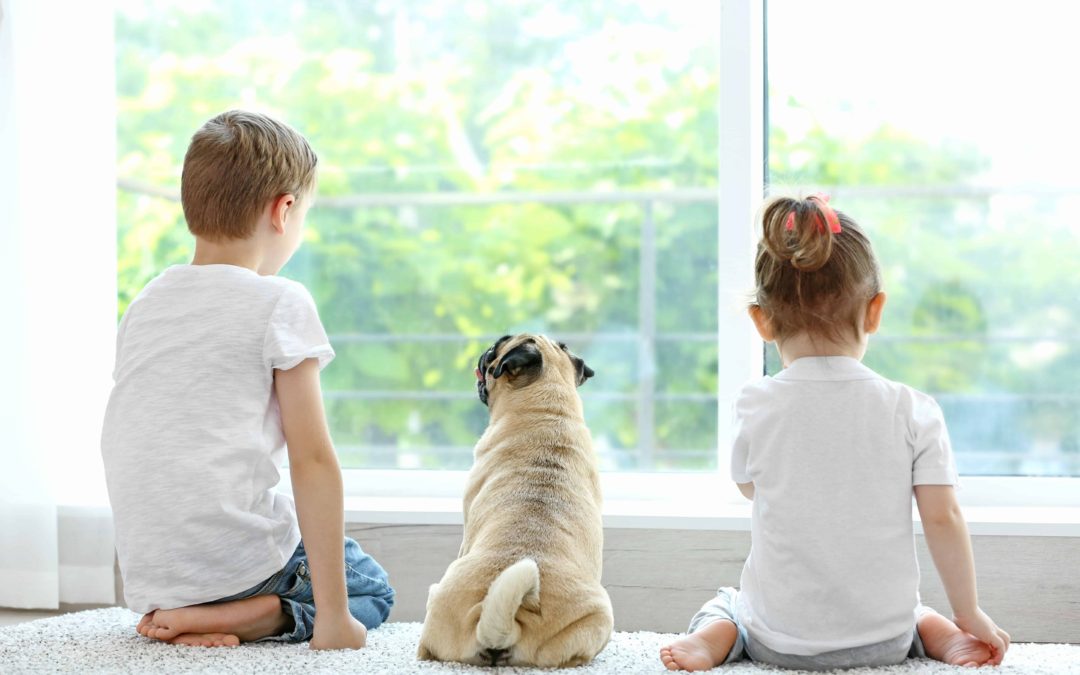Getting a puppy is a big responsibility, and it can quickly seem that you are in the trenches of raising a newborn. In many ways, you are! Puppies are little sponges, eagerly exploring their world by using their nose, eyes, mouth, and teeth. For the first six months especially, puppies are developing their personality while determining what they should be afraid of and who they should trust.
Part of raising a puppy is making responsible decisions that will shape his temperament and give him good manners with humans of all ages. If you have kids in your home, or even if you don’t, it is important to introduce your puppy to kids early in life.
The Benefits
“Even if a family doesn’t have children at home, it is important that dogs have exposure to kids,” says Trainer Judy. “It makes the dog more friendly and adaptable to new people, and chances are high that your dog will run into a kid, either on a walk or visiting the home, at least a few times in their life.”
If you have kids at home, puppies can sometimes see them as other puppies and they will try to communicate with lots of puppy play. Unfortunately, this well-meaning behavior includes plenty of puppy cues that human kids don’t understand or like – play biting, nipping, and chasing are just a few examples of puppy communication gone wrong. You want your own children to feel confident and comfortable around your new addition, and you need to know that playdates will go smoothly while visiting children feel safe around your pet. The same goes for homes without children; you need to feel confident that when a child knocks at the door or comes over for a visit, that your dog will have the experience to know how to have good manners with your small visitor.
How to Do It Safely
Introducing your puppy to children should be done as often as possible, and under your supervision. “If you don’t have kids at home, be sure that you are taking your puppy on walks near parks, schools, and other places where children will be,” says Trainer Judy. “If possible, put your puppy in a down-stay command while kids are running around to build up his tolerance for the extra energy.” Also, be sure that your puppy is on a leash when around kids until the pup is fully trained and you are confident that you have control over the situation.
Teach children good animal manners by encouraging them to ask before they pet your dog, and then putting your dog in a sit command before contact is made. Our Puppy Preschool program is a wonderful way to introduce your puppy to children of all ages in a safe and fun environment. The more socialization your puppy has with kids, the better; our Pass the Puppy activity during preschool makes for confident kids and flexible puppies.
How do you introduce your puppy to kids?

